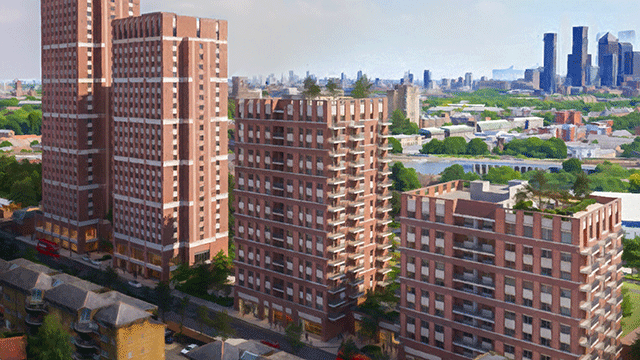The world is in a state of climate emergency. It is at a point of “no return”, according to many climate specialists. The real estate industry is well aware of its role in combating climate change and over the past 18 months has become more vocal about what it needs to do to play its part.
The challenge for British non-domestic property was laid out in stark terms in 2016 with the UK Government’s publication Getting the best from buildings, which showed average carbon emissions 3.8 times higher than the design estimate and only 1 in 49 premises showing an emission figure that was commensurate with that estimate.
Since that report was released, the government has intensified its environmental aims; becoming the first major economy to commit to being carbon-neutral by 2050, and will likely outline a series of measures to force landlords and developers to reduce or offset the environmental impact of their practices.
Responses from the industry towards the challenge overall have been praiseworthy. The UK Green Building Council has outlined a framework for the industry to move towards net-zero-carbon emissions and RIBA has committed to a five-year action plan to support the governmental target; calling the climate emergency “the biggest challenge facing our planet and our profession”.
Momentum built throughout 2019, culminating in October when the Better Buildings Partnership published a Climate Change Commitment, which has been signed by property owners with more than £300bn in real estate assets, committing them to publishing their net-zero-carbon pathways next year.
One of the first pushes to get the real estate sector to play its part in the climate change emergency was the establishment of Energy Performance Certificates in 2007 and the introduction of regulations in April 2018 that commercial landlords would be unable to renew tenancy agreements or create new tenancies if the EPC on their building had a rating of E or lower.
Now the government wants to do more. Consultation is under way on whether commercial properties should be required to achieve a minimum energy efficiency standard equal to an EPC rating of B by 2030.
But creating energy-efficient buildings does not come without a cost, so in a bid to show the value attached to delivering on MEES regulations, EG has looked at lease data from 2012 onwards within its Radius Data Exchange London Offices database and cross-referenced the hereditaments and buildings with EPC data to give an indication of rental patterns within the various rating bands.
It should be noted that EPC certifications do not singularly constitute the criteria of whether a building should be deemed “sustainable” or “green”. They are simply an avenue by which the environmental performance of buildings can be appraised, and so can give us a platform for sustainability on to which we can scaffold the commercial performance data to see if there is any relationship between the two.
Looking first at non-adjusted data for the entirety of London, we find that with each superior EPC rating came a 14.3% jump in average rental tone. Properties given the top rating A skew this slightly. When the bump from this rating is stripped away, the rungs below the top-level EPC certificate show an average uplift of 8.1% per band.
This would indicate the emergence of a stepped “premium” for London office premises with superior energy performance, and that qualitative occupier sentiment over more environmentally sound units is translating into a measurable market impact.
However, before we can definitively frame this as proof of the financial “carrot” to optimise energy performance, we need to ensure that skew factors such as building age and specific submarket location are removed.
The tables below show that the pattern is still somewhat retained, but not as starkly as the initial aggregate data for all London.
Across these two tables, there are only two submarkets (Midtown and Southern Fringe) within which statistical progress is entirely “as expected” – ie mirroring the overarching trend from the initial whole London dataset, which showed an increase in average rent for each progressively superior EPC rating.
Although not all submarkets show the expected statistical progression, the broader theme across the data is one that reflects the wider trend. Of the 145 relationships within the aggregated data tables, just 11% are “unexpected” (for example, City Fringe band D showing a higher average rent than City Fringe band C).
One interesting aspect within this method of controlling for certain factors is that the newest buildings – those that were completed or last refurbished from 2010 onwards – show the biggest distortion of any subcategory as regards to the expected rental pattern, with E and F-rated premises commanding higher average rents since 2012 than those with a C and D rating.
This tells us that, outside of the two superior rating bands, new-build office space is something of an “equalising factor” when it comes to occupier sentiment around energy performance. Demand for new, high-grade office space in London has accelerated since 2010, with prelets accounting for a historically high percentage of take-up in 2019.
Fierce competition for those spaces from businesses looking to either expand or consolidate operations means there is likely to be a natural disinclination to focus on environmental factors, and instead prioritise other elements in the new-build space to determine rental agreements.
To generate the results which may give us the strongest indication of a specific premium linked to energy performance, we bracketed the top two bands (A and B) together, and compared them directly with records for the next two bands down, C and D, which have similar characteristics.
There is some anecdotal evidence that occupiers will specifically ask for A and B-rated premises during their hunt for adequate space, so by matching the top-band rated units or buildings on comparable size, age and location, we can start to get a stronger idea of whether there is any correlation between commercial performance and environmental factors – and what the exact scale of that link is.
After matching for location, age and size; we also ensured that deal dates were as small of a skew factor within individual tenancy comparisons as possible, ensuring that with all other control factors accounted for, a deal from 2012 or 2013 was not compared with one from 2017 or 2018 – during which time rents organically rose within London.
The table below shows the final results split down by submarket as well as the overall figure.
Of the 92 sample records, 59% showed that the A or B-rated properties showed a higher rental value than their C or D rated counterparts. This translated into average rental values for the higher rating bands coming out at just over £61.20 per sq ft – some 8% higher than the comparable average rental tone for C or D-rated units and buildings.
Out of the five submarkets, the City Fringe bucked this trend with the lower EPC ratings outstripping the higher bands for rental tone. The City Core and West End indicated the most favourable results for the higher EPC bands, and the Southern Fringe the smallest differential by this metric.
The higher two bands also showed a 92% occupancy rate against an average of 86% for the lower group, indicating that tenant retention is easier in buildings with superior energy performance. Lease lengths on tenancies in the A & B category are, on average, one year longer than those in comparable units given either a C or D EPC rating.
While EPCs cannot be wholly used as a method of identifying the sustainability of a building or the value that a “green” building may offer on a rental basis, EG analysis does show that there is no evidentiary commercial downside to ensuring high-level energy performance, which, alongside the wider societal elements into which the built environment has to tessellate, should hopefully be enough to encourage major real estate stakeholders to grasp the nettle now, and continue to accelerate their vital contribution to creating a more sustainable world.
To send feedback, e-mail graham.shone@egi.co.uk or tweet @GShoneEG or @estatesgazette











